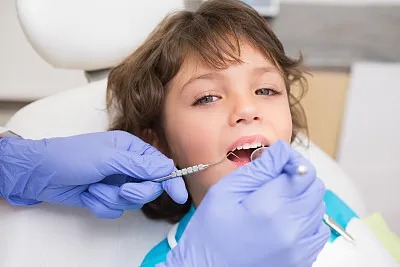The Essential Guide on How and Why to Extract a Tooth Safely and Effectively
Summary: Extracting a tooth can be a daunting process for both patients and dental professionals. This essential guide highlights the why and how of safe and effective tooth extraction, detailing the reasons for the procedure, the preparation involved, the step-by-step process during extraction, and the post-operative care required for a smooth recovery. Understanding these four critical aspects will ensure a safer experience, minimizing complications while addressing dental issues effectively. With the right knowledge, individuals can make informed decisions about their dental health and approach tooth extraction with confidence.
1. Reasons for Tooth Extraction Explained

Tooth extraction is often necessary due to various dental issues that can impact not only oral health but also overall well-being. The most common reason is dental decay, which, if left untreated, can lead to severe pain and infections. In this scenario, extraction may become the only viable option to prevent the spread of decay to adjacent teeth.
Another significant reason for extraction is periodontal disease. When gum disease progresses, it can undermine the bone structure supporting teeth, leading to loosened or damaged teeth. Extracting these compromised teeth helps to maintain the integrity of the jawbone and promotes healthier gums.
Moreover, orthodontic treatment often requires some teeth to be extracted to create adequate space for alignment. In many cases, overcrowded teeth can hinder effective alignment, making extraction a necessary step to achieving a beautiful smile. Understanding these reasons helps demystify the extraction process.
2. Preparing for a Safe Tooth Extraction
Preparation is key for a successful tooth extraction. Patients should first schedule a consultation with their dentist, who will perform a thorough examination and may request X-rays to assess the tooths position. This step allows for better planning in addressing any potential complications during the extraction procedure.
Once the dentist evaluates the need for extraction, patients must disclose their medical histories, including any allergies and existing medications, as these factors may influence anesthesia choices and the overall extraction plan. Ensuring clear communication is critical for safe practice.
Lastly, patients are advised on pre-operative instructions, which may include fasting if sedation is planned. Understanding these preparatory steps can alleviate anxiety and ensure a smoother experience during the extraction.
3. The Step-by-Step Extraction Process
The actual tooth extraction procedure generally begins with the administration of anesthesia to ensure the patient is comfortable and pain-free. Local anesthesia might be sufficient, but depending on the situation, a general anesthetic could be utilized, especially for more complex extractions.
Once anesthetized, the dentist proceeds to loosen the tooth using specialized instruments known as elevators. This step is crucial for reducing trauma to the surrounding tissues. If the tooth has erupted properly, it may be removed in a single piece; however, impacted wisdom teeth might necessitate surgical intervention where the tooth is broken into smaller parts for easier removal.
Post-extraction, the dentist places gauze over the extraction site to control bleeding and may advise biting down to assist with clot formation. Knowing the detailed steps involved can help demystify the procedure and prepare patients for what to expect.
4. Important Aftercare for Recovery
Post-operative care is crucial for minimizing complications and promoting a speedy recovery. After the extraction, patients are advised to rest and avoid strenuous activities for at least 24 hours. This helps to ensure the body can focus on healing the affected area.
Managing pain and swelling is also vital in the recovery process. Dentists generally recommend over-the-counter pain relief medications, and the application of ice packs can help reduce swelling effectively. It’s vital to follow the dentist’s recommendations regarding pain management.
Lastly, proper oral hygiene is essential during recovery. While its important to keep the extraction site clean, patients should avoid rinsing vigorously for the first 24 hours to avoid dislodging the blood clot. Gentle oral care routines can help facilitate healing while maintaining overall hygiene.
Summary:
In summary, understanding the reasons for tooth extraction, along with adequate preparation, knowledge of the extraction process, and attention to post-operative care are vital for a safe and effective experience. These aspects not only foster better dental health but also empower patients to approach the procedure with confidence.
This article is compiled by Vickong Dental and the content is for reference only.



